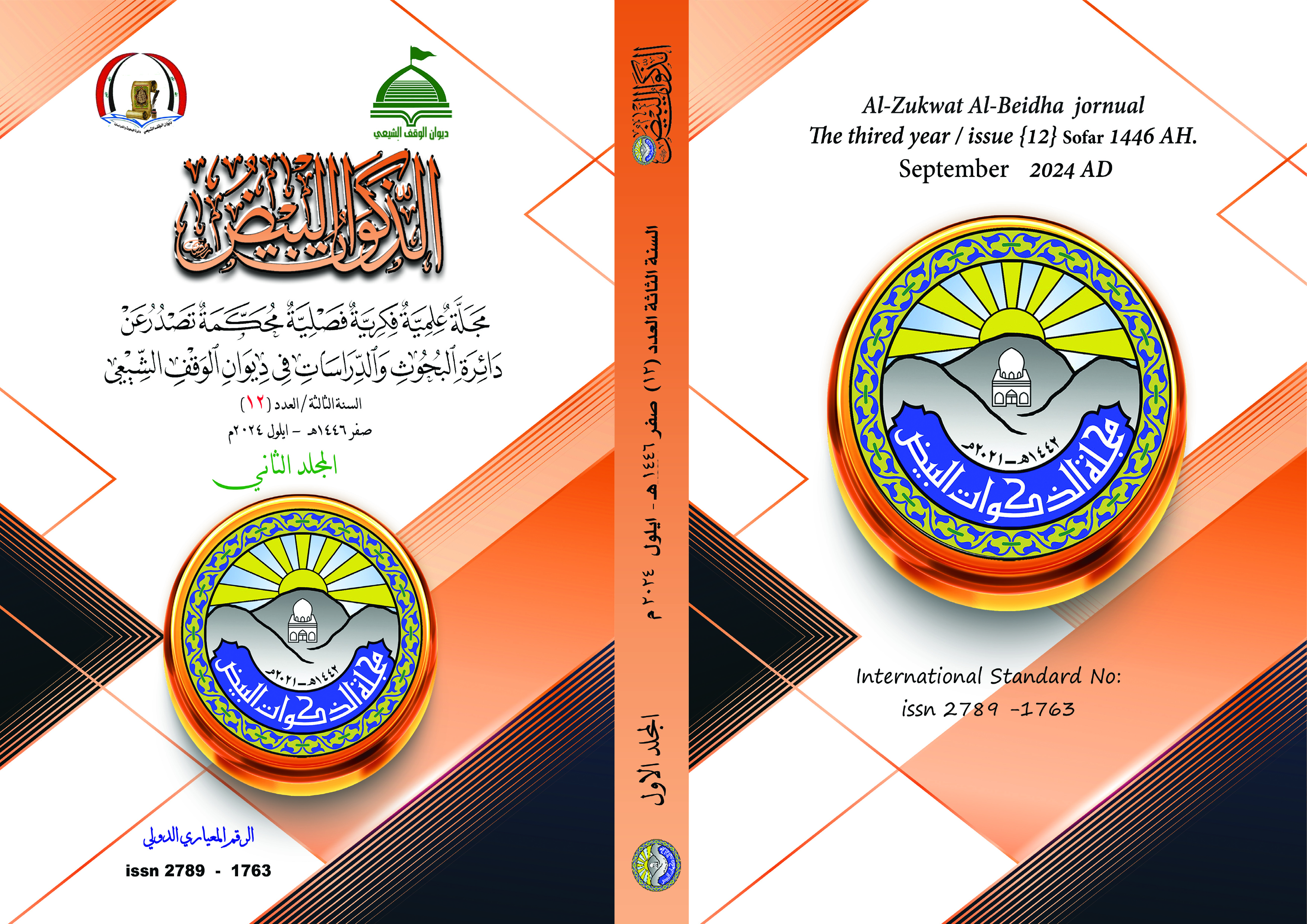Abstract
Abstract:
Travel literature is one of the most important geographical, historical and social sources, because the writer takes information and facts from live scenes and direct perception, which makes reading it useful, enjoyable and entertaining.Travel literature is one of the literary arts that appeared in the Abbasid era in the third century AH. They paid great attention to this art, and perhaps one of the oldest trips recorded at that time was the trip of the well-known grammarian Abu Saeed al-Hasan bin Abdullah al-Marzban al-Serafi to the Indian Ocean, and the trip of Salam al-Turjuman to The fortresses of the Caucasus Mountains in the year 227 AH, commissioned by the Abbasid Caliph Al-Wathiq, to search for the Dam of Gog and Magog, as this literary art is considered one of the arts close to the story and novel in terms of form and content.In this brief research, I tried to define travel literature in language and terminology, the importance of travel literature, the reasons for travel, its style and components, its characteristics and development, and the scientific value of travel literature, which contributes to strengthening the solid arts of Arabic literature at all levels.As for the components of travel literature, they are also undoubtedly considered among the most important characteristics of this art, on which the artistic structure of this literature is based, in addition to the historical evidence that travel literature has passed through, and the eras that accompanied the development of this important literary art.
Travel literature is one of the most important geographical, historical and social sources, because the writer takes information and facts from live scenes and direct perception, which makes reading it useful, enjoyable and entertaining.Travel literature is one of the literary arts that appeared in the Abbasid era in the third century AH. They paid great attention to this art, and perhaps one of the oldest trips recorded at that time was the trip of the well-known grammarian Abu Saeed al-Hasan bin Abdullah al-Marzban al-Serafi to the Indian Ocean, and the trip of Salam al-Turjuman to The fortresses of the Caucasus Mountains in the year 227 AH, commissioned by the Abbasid Caliph Al-Wathiq, to search for the Dam of Gog and Magog, as this literary art is considered one of the arts close to the story and novel in terms of form and content.In this brief research, I tried to define travel literature in language and terminology, the importance of travel literature, the reasons for travel, its style and components, its characteristics and development, and the scientific value of travel literature, which contributes to strengthening the solid arts of Arabic literature at all levels.As for the components of travel literature, they are also undoubtedly considered among the most important characteristics of this art, on which the artistic structure of this literature is based, in addition to the historical evidence that travel literature has passed through, and the eras that accompanied the development of this important literary art.
Keywords
Arabic literature
countries
History
Keywords: travel literature
literary arts.
Abstract
المستخلص:
أدب الرحلات يعد من أهم المصادر الجغرافية والتاريخية والاجتماعية، لأن الكاتب يأخذ المعلومات والحقائق من المشاهد الحية، والتصور المباشر، مما يجعل قراءته مفيدة وممتعة ومسلية.
وأدب الرحلة هو أحد الفنون الأدبية التي ظهرت في العصر العباسي في القرن الثالث الهجري ، وكانت عنايتهم بهذا الفن عناية كبيرة ، ولعل من أقدم الرحلات التي سُجلت آنذاك هي رحلة النحوي المعروف أبو سعيد الحسن بن عبد الله المرزبان السيرافي إلى المحيط الهندي ، ورحلة سلام الترجمان إلى حصون جبال القوقاز عام 227 هـ، بتكليف من الخليفة العباسي الواثق، للبحث عن سدّ يأجوج ومأجوج، إذ يعتبر هذا الفن الأدبي من الفنون القريبة إلى القصة والرواية من حيث الشكل والمضمون.
وفي هذا البحث الموجز حاولت أن أعرف أدب الرحلة لغة واصطلاحا، وأهمية أدب الرحلة ودواعي الرحلة، وأسلوبها ومكوناتها، وخصائصها وتطورها، والقيمة العلمية لأدب الرحلة والتي تُسهم في تعزيز الفنون الرصينة للأدب العربي في جميع مستوياته .
أما مكونات أدب الرحلة فهي أيضا بلا شك تعتبر من أهم خصائص هذا الفن التي تقوم عليها البنية الفنية لهذا الأدب ، فضلاً عن الشواهد التاريخية التي مرّ بها أدب الرحلة ، والعصور التي رافقت تطوّر هذا الفن الأدبي المهم .
أدب الرحلات يعد من أهم المصادر الجغرافية والتاريخية والاجتماعية، لأن الكاتب يأخذ المعلومات والحقائق من المشاهد الحية، والتصور المباشر، مما يجعل قراءته مفيدة وممتعة ومسلية.
وأدب الرحلة هو أحد الفنون الأدبية التي ظهرت في العصر العباسي في القرن الثالث الهجري ، وكانت عنايتهم بهذا الفن عناية كبيرة ، ولعل من أقدم الرحلات التي سُجلت آنذاك هي رحلة النحوي المعروف أبو سعيد الحسن بن عبد الله المرزبان السيرافي إلى المحيط الهندي ، ورحلة سلام الترجمان إلى حصون جبال القوقاز عام 227 هـ، بتكليف من الخليفة العباسي الواثق، للبحث عن سدّ يأجوج ومأجوج، إذ يعتبر هذا الفن الأدبي من الفنون القريبة إلى القصة والرواية من حيث الشكل والمضمون.
وفي هذا البحث الموجز حاولت أن أعرف أدب الرحلة لغة واصطلاحا، وأهمية أدب الرحلة ودواعي الرحلة، وأسلوبها ومكوناتها، وخصائصها وتطورها، والقيمة العلمية لأدب الرحلة والتي تُسهم في تعزيز الفنون الرصينة للأدب العربي في جميع مستوياته .
أما مكونات أدب الرحلة فهي أيضا بلا شك تعتبر من أهم خصائص هذا الفن التي تقوم عليها البنية الفنية لهذا الأدب ، فضلاً عن الشواهد التاريخية التي مرّ بها أدب الرحلة ، والعصور التي رافقت تطوّر هذا الفن الأدبي المهم .
Keywords
الكلمات المفتاحية :أدب الرحلة ، الأدب العربي ، البلدان التاريخ ، الفنون الأدبية .
